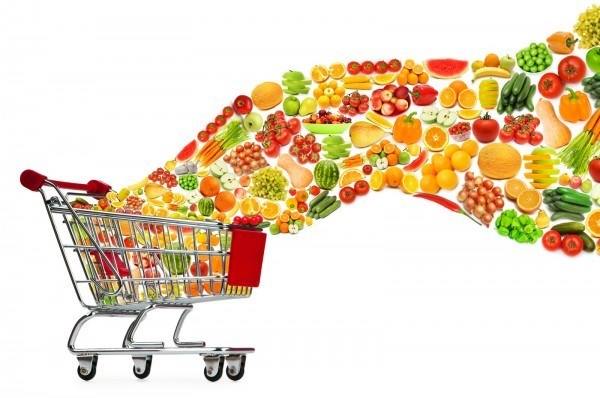Ah Food!
So much good stuff out there. So much tasty, amazing and wonderful food to delight and revel in. Not to mention the endless choices and variety of foods.
At times the whole subject can border on overwhelming.
If you do not eat processed or prepared food – congratulations for your healthy choice. Not the easiest choice, but likely one that makes you very happy. Your supermarket choices become more limited, but after a time the benefits outweigh the limits.
If you eat processed food (join the large crowd), the main question becomes how to navigate all the choices to get the best into your kitchen. You could of course pay no attention and grab whatever suits your fancy. If this approach worked we might not have any obesity or diet related illness in this country. However the issue exists and so the question remains – how do we know what to choose?
Some choices pose easier answers than others. Sugar infused children’s serials? No. Artifically flavored Nacho Crunch Chips? No. Triple Chocolate Fudge Ripple Ice Cream made from 80% buttermilk? No.
The challenge comes from items that appear decent. Whole grains. Low sodium. No trans fat. On first glance it looks like the right track to toss the item in your cart. However you notice some unfamiliar words on the label. Chemicals and other ingredients. Perhaps doubt begins to form in your mind. How do I know these are ok?
Luckily some options exist. We find a great resource to carry with you shopping is an additive guide. Basically something that describes the different chemicals and additives in a simple manner with relative ease. After all you don’t want to spend hours researching all the ingredients.
One guide we like (a review is forthcoming in another article) by Bill Statham, Eat Safe: The Truth about Additives from Aspartame to Xanthan Gum proves to be very reliable when wandering the aisles of our local market. This is the newest edition of his classic book The Chemical Maze Shopping Companion. It’s a pocket-sized book that lists almost all of the chemical additives likely found in foods or cosmetics. The book offers easy to understand explanations of the function of the chemical, why it was added to the food or cosmetic, and any possible effects of the chemical.
In the discussion about chemicals in foods and cosmetics, knowledge is power. Are all chemicals bad? No. But some are. When you understand what is in your food, you can choose to eat or not eat it. Avoiding things with a possible negative effect saves you a world of problems.
Important to note that at the moment no significant studies exist on how all these chemical additives interact with each other, especially over time. At the moment they all coexist in your Snacky Crunchy Pops, but what does that mean for your body over years of exposure. We do know from observation that a variety of problems such as: blurred vision, headaches, irritability, sleep disruption, GI upset, hives, and skin rashes can disappear when we remove chemical additives from the diet. That tells us something important.
You might then ask, “Why are these chemicals allowed in our food?”. Many of these chemicals hold a classification by the United States Food and Drug Administration (FDA) as “GRAS”, or “Generally Recognized As Safe”. If a manufacturer can obtain a GRAS designation for their chemical, then it can be used freely in food and cosmetic products. When suspicions arise about a widely used GRAS product, it is very difficult to have the GRAS status re-reviewed.
Many products receive a GRAS designation because the manufacturer tells the FDA the chemical is safe. The FDA does not do an independent review. A classic example is the artificial sweetener Splenda. It is known to have toxic effects in mammals. The manufacturer insisted that humans do not absorb it, so no reason for concern. It turns out that we do absorb Splenda, but the GRAS designation stands. Reversing it does not appear likely.
This gives you the sense of the overall challenge in trusting manufacturers and the food we buy. It takes time to find brands you like, that do you benefit and you trust. Plus, let’s be honest. Some foods are hard to give up. We might simply not feel that removing a food matters much in our overall health.
If you can’t imagine giving up your chemicals, we pose a challenge to consider. If you have ANY challenges to your health, try giving up ALL chemicals for six weeks and see what happens to your health. You can go without most things for 6 weeks. If you do you might be in for a pleasant surprise.
Just try.
Another nice resource comes from the FDA, believe it or not. The world is full of contradictions for sure. A number of years ago they published a brochure called More Than You Ever Thought You Would Know About Food Additives. The brochure provides solid advice and guidance so that you make good, informed choices. They stopped printing it a few years ago but we find the information to still be pertinent even now.
Would you like a copy of this FDA brochure? Click here to get a PDF of the brochure More Than You Ever Thought You Would Know About Food Additives. A little gift for you and your family from us.
Again check out the book from Bill Statham (Get Eat Safe Here) for a handy resource. Also keep a look out for our review.
Do you recommend a good resource for food additives? We’d love to hear about it. Leave a comment and share with us your process of searching out the best food when you shop. After all, collaborative effort lets us share in the excellence.
Until next time we wish you safe and healthful eating. Let your wisdom do the shopping.
Image courtesy © Can Stock Photo Inc. / Elnur

